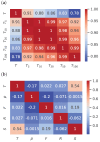Efficient Soil Temperature Profile Estimation for Thermoelectric Powered Sensors
- PMID: 40648486
- PMCID: PMC12252475
- DOI: 10.3390/s25134232
Efficient Soil Temperature Profile Estimation for Thermoelectric Powered Sensors
Abstract
Internet of Things (IoT) sensors designed for environmental and agricultural purposes can offer significant contributions to creating a sustainable and green environment. However, powering these sensors remains a challenge, and exploiting the temperature difference between air and soil appears to be a promising solution. For energy-harvesting technologies, accurate soil temperature profile data are needed. This study uses meteorological and soil temperature profile data collected in the Czech Republic to train machine learning models based on Polynomial Regression (PR), Support Vector Regression (SVR), and Long Short-Term Memory (LSTM) to predict the soil temperature profile. The results of the study indicate an error of 0.79 °C, which is approximately 10.9% lower than the temperature error reported in state-of-the-art studies. Beyond achieving a lower temperature prediction error, the proposed solution simplifies the input parameters of the model to only ambient temperature and solar irradiance. This improvement significantly reduces the computational costs associated with the regression model, offering a more efficient approach to predicting soil temperature for the purpose of optimizing energy harvesting in IoT sensors.
Keywords: Internet-of-Things sensors; energy harvesting; long short-term memory; polynomial regression; support vector regression; temperature modelling.
Conflict of interest statement
The authors declare no competing interests.
Figures











References
-
- Pamula A.S.P., Ravilla A., Madiraju S.V.H. Applications of the Internet of Things (IoT) in Real-Time Monitoring of Contaminants in the Air, Water, and Soil. Eng. Proc. 2022;27:26. doi: 10.3390/ecsa-9-13335. - DOI
-
- Thi Kim Tuoi T., Van Toan N., Ono T. Thermal energy harvester using ambient temperature fluctuations for self-powered wireless IoT sensing systems: A review. Nano Energy. 2024;121:109186. doi: 10.1016/j.nanoen.2023.109186. - DOI
-
- Chatterjee A., Lobato C.N., Zhang H., Bergne A., Esposito V., Yun S., Insinga A.R., Christensen D.V., Imbaquingo C., Bjørk R., et al. Powering internet-of-things from ambient energy. J. Phys. Energy. 2023;5:022001. doi: 10.1088/2515-7655/acb5e6. - DOI
-
- Prauzek M., Konecny J., Paterova T. An Analysis of Double Q-Learning-Based Energy Management Strategies for TEG-Powered IoT Devices. IEEE Internet Things J. 2023;10:18919–18929. doi: 10.1109/JIOT.2023.3283599. - DOI
-
- Li C., Zhang Y., Ren X. Modeling Hourly Soil Temperature Using Deep BiLSTM Neural Network. Algorithms. 2020;13:173. doi: 10.3390/a13070173. - DOI
Grants and funding
LinkOut - more resources
Full Text Sources
Research Materials

